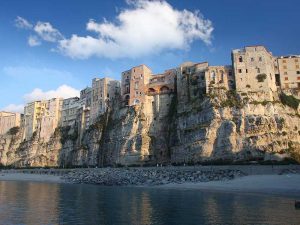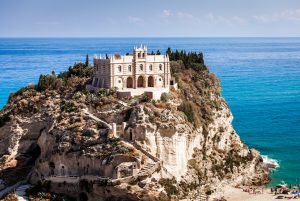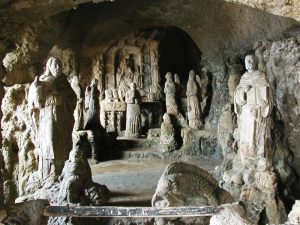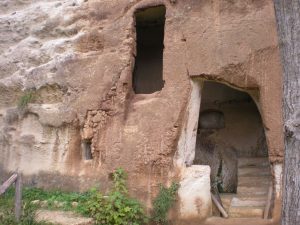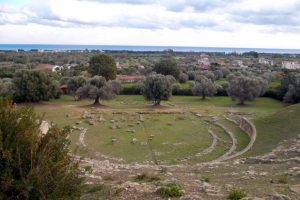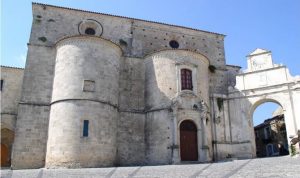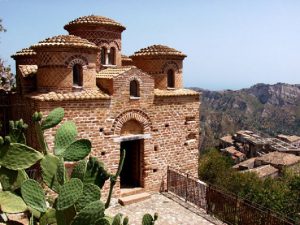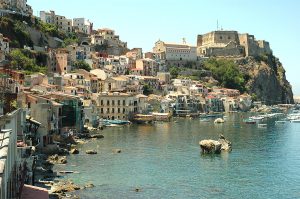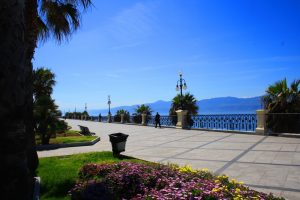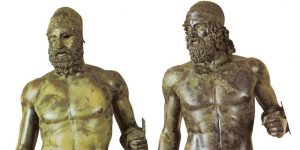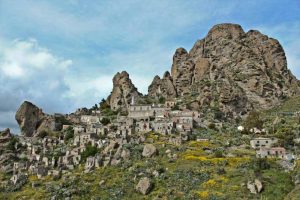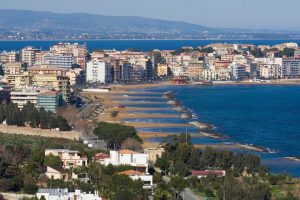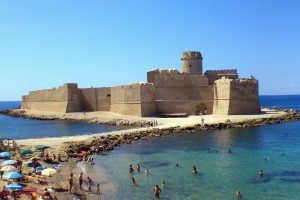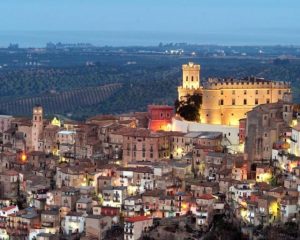Tropea
Tropea is Calabria’s most sophisticated seaside town, located on the southwest coast of Italy. A unique beach location in a picturesque position surrounded by white sandy beaches, turquoise waters and fantastic rock formations. The beautiful old town, perched on a cliff overlooking the aquamarine sea dates back to the 16th Century, with charming lanes, excellent restaurants, little boutiques, bars and piazzas with breathtaking views over the Aeolian Islands (Stromboli). Famous for its authentic feel, natural beauty and spectacular sunsets, Tropea is a great holiday choice.
To visit:
- The “Corso”: the main street, if you go down this street you have a breathtaking view on the sea and on the Church on the Island
- The Cathedral: Norman dome, re production of the Madonna di Romania
- The Church of “S. Maria dell’Isola”: the touristic icon of Calabria, in Italy and in the whole world, medieval origins
To taste:
- The red onion of Tropea: sweet onion, not bitter
Pizzo
Pizzo, sometimes called Pizzo Calabro, is a seaside town in Calabria, southern Italy. The historic heart of the town is on a headland above the sea; newer settlements spread along the seashore in either direction. There are beaches nearby and Pizzo is both a busy ‘local’ town and a holiday destination. It makes a good day out from Tropea, a more famous tourist resort further along the Costa degli Dei (‘Coast of the Gods’).
To visit:
- The Castle Murat: about 1280, with the scope of defending the coast from the barbaric.
- The “Chiesetta Piedigrotta”: church carved into the rock, with stalagmites turned into statues
To taste:
- Icecream of Pizzo (Tartufo)
Locri
Locri is situated 7 metres above the level of the sea and is very popular in the province of Reggio Calabria. La città di Locri sorge a 7 metri sul livello del mare ed è situata in un’area intensamente popolata nella provincia di Reggio Calabria. Locri is one of the most important and active centers of the Calabrian Ionian coast as it offers much culture and history (the important archeological area of Locri Epizephiri).
To visit:
- Greek-roman theatre
- Epizephiri: “Torre dei Cervi” (1400-1500)
Gerace
Gerace, historical centre with many monuments, situated in the region of Reggio Calabria, also called pearl of the Ionian sea. The historical centre offers the romantic-norman cathedral, declared as a national monument. The older people of Gerace are telling that there existed 128 churches in Gerace. At the end of ‘700 43 churches were counted, but after the earthquake in 1783 they were reduced in 17. These 17 churches now are mostly abandoned.
To visit:
- The Castle
- The Cathedral: in a romanantic-bizantine-norman style, 1898 m2, the biggest romantic Church of Italy
Stilo
The economy of the commune is mainly based on agriculture, with production of cereals, oil, wine and cheese. There are mines of iron and lead. At 10 kilometers from the city is the promontory of Cape Stilo, where in 1940 the Battle was fought by the Italian and British Navies. The origins of Stilo are connected to the destruction of the ancient Greek colony of Caulonia by Dionysius II of Syracuse, followed by another by the Campanians (allies of the Romans) in 277 BC.
To visit:
- The “Cattolica”: bizantine style
- The Church of San Domenico
- The Norman Castle: situated on the mountain Consolino
Scilla
Scilla is a town and comune in Calabria, Italy, administratively part of the Province of Reggio Calabria. It is the traditional site of the sea monster Scylla of Greek mythology. The Ruffo Castle, a fortress built by the Dukes of Calabria overlooks the beach. Unfortunately the village suffered greatly from the 1783 earthquakes in Calabria.
To visit:
- The Castle “dei Ruffo”: beautiful stairway and room of access, views to the sea
- Chianalea: “la piccola Venezia del Sud”, le case sono costruite sugli scogli e si affacciano sul mare
Reggio Calabria
The city of Reggio Calabria presents the most antique city of the region Calabria, the city was founded at the beginning of the Greek colonization with the name Reghion. When you go to Reggio you definitely need to visit the National Museum where you will find the famous Bronzi di Riace.
To visit:
- The National Museum: statues of Bronzi di Riace, “la Testa di Filosofo”
- The Aragonese Castle: the principle fortress of the city, one of the principle historical symbols of the city
Da assaggiare:
- The home made pasta
- “La parmigiana”: on a basis of aubergines
- Sweets: the famous granite, cassate siciliane, cannoli, the traditional cuddhuraci and ice cream
- The “Bergamotto”: the most fragrant citrus fruits, which is a fundamental basis for the perfume industry
Serra San Bruno
Serra San Bruno is a comune in the Province of Vibo Valentia in the Italian region Calabria. Close by is the famous Carthusian monastery, Serra San Bruno Charterhouse (Certosa di Santo Stefano di Serra San Bruno), around which the town grew up. The town is named after Saint Bruno of Cologne, who founded the Carthusian Order in 1053 and the Grande Chartreuse, mother house of the Carthusians, near Grenoble, in France. He built the charterhouse of Serra San Bruno in 1095, and died here in 1101.
To visit:
- “La Certosa”: offers a big forest at the southern end of the town
- The Museum of the “Certosa”: 20 rooms
- The Church of S. Biagio: century XVIII
Pentedattilo
Pentedattilo is situated less than 30 km far from Reggio Calabria, under a rock that seems a giant hand which raises five fingers to the sky. The place enjoys microclimate: you can find many tropical plants there.
To visit:
- Rests of the castle
- Old, very interesting streets
- Unique view
Crotone
The Cathedral, originally from the 9th to 11th centuries, but largely rebuilt. It has a neo-classical facade, while the interior has a nave with two aisles, with Baroque decorations. Noteworthy are a baptismal font (12th century) and the Madonna di Capo Colonna, the icon of the Black Madonna which, according to the tradition, was brought from East in the first years of the Christian era.
The 16th-century Castle of Charles V. It houses the Town Museum, with findings excavated in the ancient site of Kroton. Notable are also the remnants of the walls, of the same century, and of various watchtowers. The ancient castle built on an island, with accessibility on foot limited to a narrow strip of land, is referred to as Le Castella.
To visit:
- The Castle: century XVI
- The Dome: bizantine table of the “Madonna di Capocolonna”
- The archaeological museum
To taste:
- The local cheese: done out of sheep’s and goat’s milk with black pepper
Le Castella
Le Castella is a small village of the province of Crotone, situated on the Ionian coast of Calabria. Today it is known as a touristic place as it is possible to combine the bathing tourism with cultural tourism, local food as well as traditions.
To visit:
- The Aragonese Castle
- The Piazza Uccialì
- The Harbour
Cosenza
Between the capital cities of Calabria. Cosenza occupies the first place in economic activities, strong development and offers many cultural and artistical attractions, as you can find there the “University of Calabria”.
To visit:
- The Castle: XII century
- The Cathedral: of the 5th century, was entirely rebuilt after the earthquake in 1184
- The National Gallery

